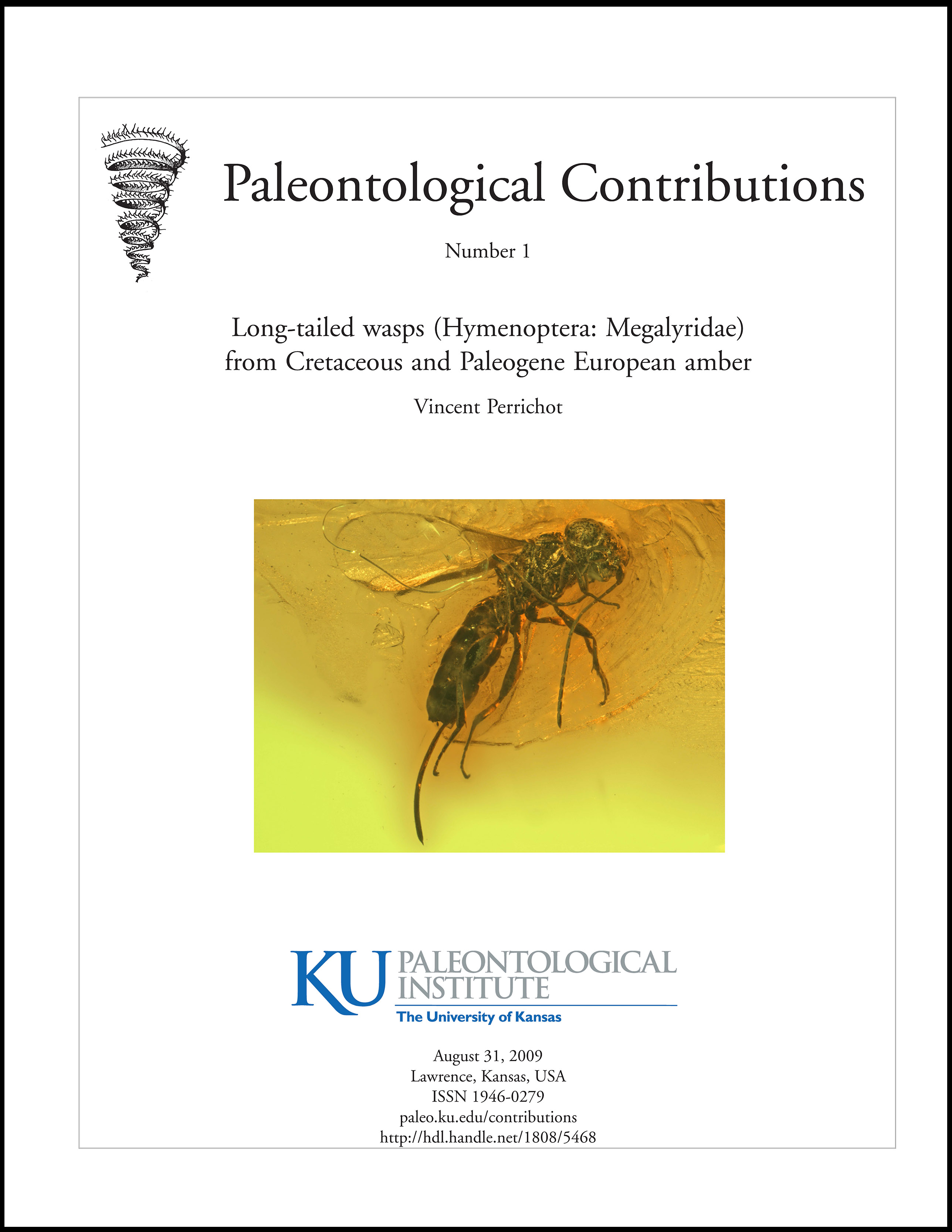Paleontological Contributions no. 1: Long-tailed wasps (Hymenoptera: Megalyridae) from Cretaceous and Paleogene European amber
DOI:
https://doi.org/10.17161/PC.1808.5468Keywords:
Insecta, Hymenoptera, Apocrita, megalyrid wasp, Mesozoic, Cenozoic, TertiaryAbstract
Fifty-two fossils of megalyrid wasps from various collections of European amber were examined. A male neotype for Prodinapsis succinalis Brues and a female neotype for P. minor Brues are designated. The two species are redescribed and illustrated from Eocene and Oligocene amber, and males are tentatively distinguished by the length of their forewing. Three new species are described: P. pumilio Perrichot & Perkovsky n. sp., from a single female preserved in upper Eocene Rovno amber (Ukraine); P. janzeni Perrichot n. sp., from three males in Eocene Baltic and Rovno amber; and P. oesiensis Perrichot n. sp., from a single male preserved in lower Eocene French amber. A key for the identification of the five species of Prodinapsis is provided. Megazar elegans Perrichot n. gen. and n. sp., and Megalava truncata Perrichot n. gen. and n. sp., are described from Albian French and Spanish amber, respectively, and are placed in a new tribe Megazarini Perrichot n. tribe, which is characterized by the mesothoracic spiracle not being surrounded by pronotal cuticle posteriorly, the inner margin of the metathoracic trochanter, femur, tibia, and first two tarsomeres having comblike spines or stiff setae, the forewing with M+Cu being tubular, the basal segment of Rs being very long, and a narrow medial cell [1M]. The following new fossil genera and species are also described and illustrated: Ukrainosa prolata Perrichot & Perkovsky n. gen. and n. sp., from Eocene Rovno amber; Rubes bruesi Perrichot n. gen. and n. sp. from Eocene Baltic amber; Megallica parva Perrichot n. gen. and n. sp., from upper Albian amber of France; and Valaa delclosi Perrichot n. gen. and n. sp., from lower Albian amber of Spain. A second specimen of Megalyra baltica Poinar & Shaw is illustrated from Baltic amber and discussed. A key for the identification of all known fossil and extant genera is provided. The new fossils extend significantly our knowledge of the evolutionary history of Megalyridae sensu stricto (i.e., excluding Cleistogastridae) that hitherto comprised eight modern and two extinct genera. They also emphasize the relictual distribution of the family that is now mainly restricted in tropical and austral regions, while it obviously occurred widely in ancient forests of the northern hemisphere during the Mesozoic and Cenozoic era.
Downloads
Published
Issue
Section
License
Copyright (c) 2023 Vincent Perrichot

This work is licensed under a Creative Commons Attribution 4.0 International License.
- Authors retain copyright and the works are licensed under a Creative Commons Attribution 4.0 License that allows others to share the work with an acknowledgement of the work's authorship and initial publication in this journal.
- Authors are permitted and encouraged to post their work online (e.g., in institutional repositories or on their website) prior to and during the submission process, as it can lead to productive exchanges, as well as earlier and greater citation of published work (See The Effect of Open Access)


